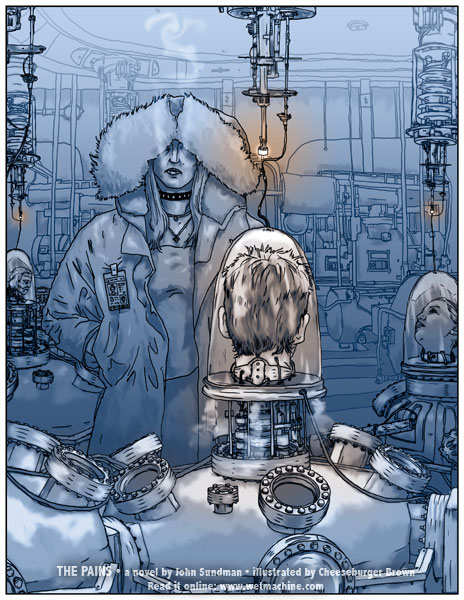The creepy-cool illustration by Cheeseburger Brown that appears below is from my novella The Pains. It’s starting to appear here and there about the web as news spreads about the alleged abuse of the frozen head of Ted Williams.

I have to admit that the saga of Ted Williams’ head was much in the news when I was writing The Pains, and part of my intent was to mock the silly Transhumanists who were touting Alcor Life Extension as a sure route to some kind of Star Trekian afterlife.
I don’t have a care what happens to my body after I die, and I’m not much for grave veneration. But I do think that a decent respect for the remains of dead persons is kind of central to any claim to civilization. (How I Destroyed the New Economy, an essay I wrote for Salon a few years ago, tells how my taking part in the desecration of sacred ground on Martha’s Vineyard caused the dot com bubble to burst.)
So I don’t think it’s especially funny that Ted Williams’s head was evidently batted around with a monkey wrench. On the other hand I do think it’s kind of funny (Ted Williams being dead, after all), that Alcor has been revealed to be the kind of grotesque charade that I lampooned in The Pains. I hope this story makes radical Transhumanists out to look like a bunch of fools, and that the Ted Williams story brings overdue attention to Cheeseburger’s amazing illustrations and causes me to sell a bunch of books. It’s already brought me a bunch of visitors from baseball fan sites. New visitors to Wetmachine, welcome! Please check out my books. Better still, buy a few. They’re good, I promise.
Below the fold: The Gruesome Details, according to a former Alcor executive.



